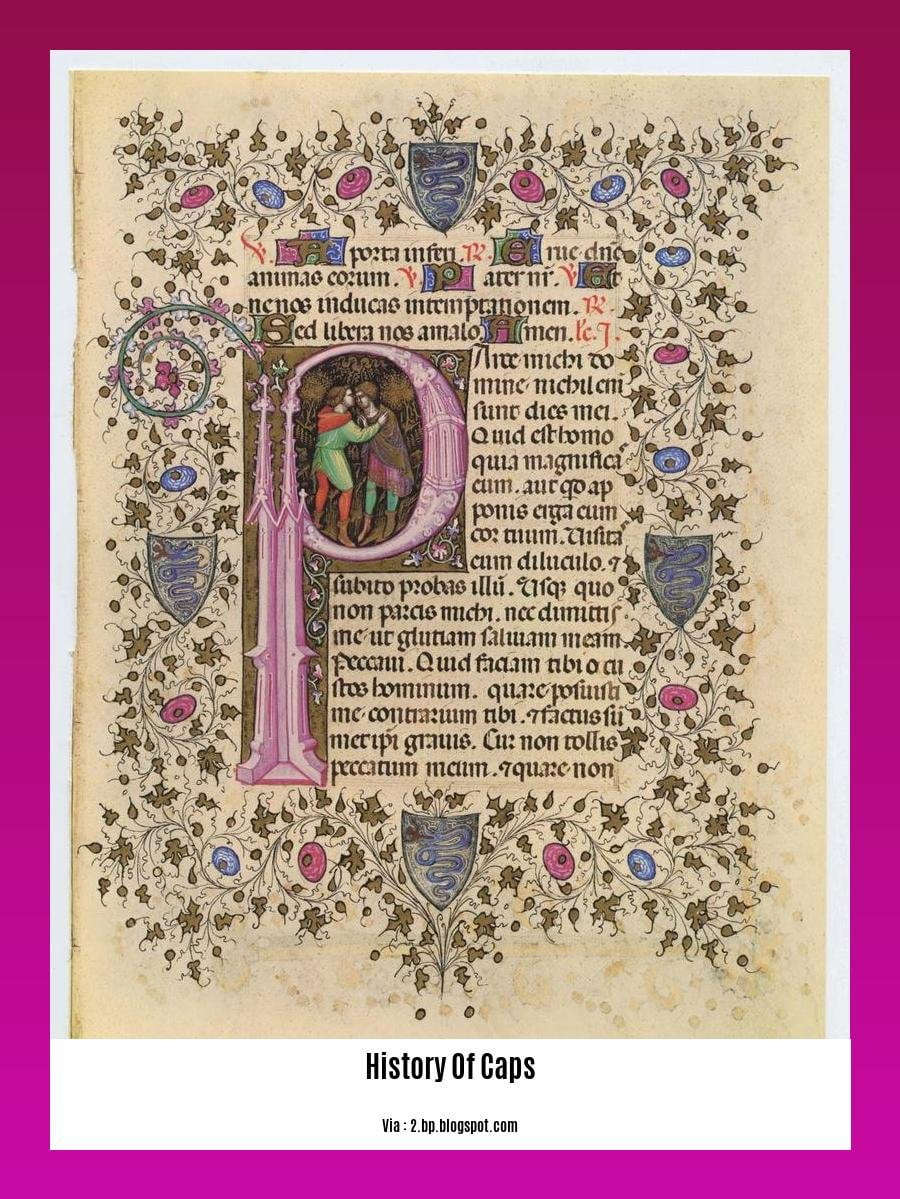Embark on an enthralling journey through time and culture as we delve into the captivating history of caps. From humble beginnings to their evolution into cultural icons, these timeless accessories hold a wealth of stories, symbolism, and intricate details. Join us as we unravel the rich narratives woven into these head coverings, revealing the profound impact they have had on societies across the globe. Get ready to uncover the fascinating world of caps in [Unveiling the History of Caps: A Journey Through Time and Culture].
Key Takeaways:
Caps have existed for over 5,000 years, dating back to 3200 BC.
The term “cap” originates from the Old French word “chapeau,” meaning “head covering.”
Initially used for sun protection, caps evolved into fashion and sports staples.
Baseball pioneered the use of caps in sports, with straw hats in 1849 and Merino wool caps later becoming the prototype for modern baseball caps.
The 19th century witnessed the rise of sportswear, including caps, in fashion, particularly among women.
New Era’s decision to sell caps to the general public in the 1980s led to their widespread adoption in fashion.
Baseball caps, fitted caps, snapback caps, and trucker hats gained popularity in music videos, films, and on the runways.
History of Caps

Throughout the annals of fashion and cultural evolution, caps have left an indelible mark on human history. From their humble beginnings as utilitarian headwear to their current status as cultural icons and fashion statements, caps have undergone a remarkable journey. Join us as we delve into this fascinating history, uncovering the stories behind these iconic accessories.
From Humble Origins to Cultural Icons
The history of caps can be traced back to ancient civilizations. Initially crafted from animal skins or woven fibers, they served a basic purpose: protection from the sun’s scorching rays. As civilization progressed, caps evolved into more sophisticated forms, reflecting cultural and social changes. In ancient Greece, caps signified a person’s social status, while in medieval Europe, they were used to denote a trade or profession.
The Rise of Sportswear and Caps
The 19th century witnessed a growing fascination with sports, and caps played a pivotal role. In 1849, baseball players adopted straw hats for protection from the sun, marking the beginning of a long-lasting relationship between caps and sports. By the late 19th century, Merino wool caps with crowns and visors, the precursors to modern baseball caps, had become ubiquitous on baseball fields.
Caps in the Fashion Mainstream
In the late 19th century, sportswear, including caps, began to gain traction in the fashion world, particularly among women. The practicality and comfort of caps appealed to women seeking a more active lifestyle, and by the early 20th century, caps had become a staple of women’s fashion. This trend was further fueled by the rise of sportswear and athleticism in the 1920s and 1930s.
The Modern Era: Caps as Fashion Icons
The 1980s marked a turning point in the history of caps. With the popularity of music videos, films, and runway shows, caps transcended their humble origins and became fashion icons. New Era, a leading manufacturer of baseball caps, began selling caps to the general public, leading to their widespread adoption in fashion. Today, caps come in a myriad of styles and designs, catering to diverse tastes and preferences. From baseball caps to fitted caps, snapback caps, and trucker hats, caps have become ubiquitous in fashion, music, and popular culture.
Are you curious about the rich history of Callaway irons? Dive into the captivating journey of how they revolutionized the game of golf and shaped the industry as we know it. History of Callaway Irons
Immerse yourself in the vibrant tapestry of Caribbean Carnival’s history. Discover the captivating origins, cultural influences, and evolution of this exhilarating celebration that captivates hearts worldwide. History of Caribbean Carnival
Embark on a musical voyage through the captivating history of Carnatic music. Explore the enchanting origins, remarkable evolution, and profound impact of this classical Indian genre that continues to mesmerize audiences. History of Carnatic Music
Cultural Symbolism: Uncovering the cultural meanings and symbolism associated with caps in various societies and communities.

Have you ever wondered about the symbolic meanings behind the caps we wear? These humble accessories, often overlooked in the fashion narrative, hold a wealth of cultural significance that spans across societies and communities. From ancient civilizations to modern-day trends, caps have served as powerful symbols of identity, social status, and cultural expression. Join me on a journey to uncover the fascinating world of cap symbolism.
Expressions of Identity
Caps have long been associated with specific groups or individuals, marking their affiliation or identity. In ancient Greece, for instance, different styles of caps denoted a person’s social status. In medieval Europe, caps were used to identify members of a particular trade or profession, with unique designs and colors signifying their craft.
Today, caps continue to play a vital role in expressing group identity. Baseball caps, for example, are often adorned with team logos or national flags, proudly displaying one’s allegiance to a sports team or country. Similarly, military caps and police caps serve as symbols of authority and honor, representing the wearer’s dedication to their service.
Cultural and Religious Symbolism
Beyond their practical uses, caps have deep cultural and religious significance in many communities. In traditional African cultures, for instance, caps are often intricately designed and hold spiritual or ceremonial importance. In some Native American tribes, headdresses made of feathers or animal skins are worn during sacred rituals and ceremonies, symbolizing the wearer’s connection to the spirit world.
In religious contexts, caps can also carry symbolic meanings. In Judaism, for example, the kippah or yarmulke is a small, round cap worn by Jewish men as a sign of respect and reverence for God. Similarly, in Sikhism, the turban is a mandatory head covering for Sikh men and women, symbolizing their commitment to their faith and community.
Fashion and Cultural Trends
In the realm of fashion, caps have evolved into cultural icons, transcending their utilitarian origins. From the iconic beret associated with French style to the trendy baseball caps that have become a staple in streetwear, caps have become powerful symbols of cultural trends and personal style.
In recent years, the rise of athleisure fashion has further cemented the cap’s status as a cultural symbol. With their fusion of comfort and style, caps have become a ubiquitous accessory, worn by people from all walks of life, regardless of their age, gender, or background.
Key Takeaways:
Caps have a rich history, dating back to ancient civilizations, where they were used to denote social status, trade, or profession.
In modern times, caps continue to be important symbols of group identity, with baseball caps representing sports teams or national pride, and military or police caps symbolizing authority and honor.
Caps also hold cultural and religious significance, with intricate designs in African cultures, sacred headdresses in Native American tribes, and the kippah or turban in Judaism and Sikhism, respectively.
In the realm of fashion, caps have evolved into cultural icons, representing style trends and personal expression, especially with the rise of athleisure fashion.
Source
Cultural Symbolism – an overview | ScienceDirect Topics
Meaning and Symbolism in Culture | SpringerLink
Fashion and Function: Discussing the interplay between fashion and function in the history of caps, considering their protective, practical, and aesthetic roles.
Fashion, with its seamless blend of aesthetics and utility, has played a pivotal role in the evolution of caps. These protective head coverings have transcended their initial purpose, becoming cultural symbols and fashion statements that speak volumes about the wearer. Let’s delve into the intriguing interplay between fashion and function in the captivating history of caps.
Protective Function: A Shield Against the Elements
Since their inception, caps have served as a protective barrier against the harsh elements of nature. From the scorching sun to the biting cold, caps have shielded our heads, providing both comfort and safety. The materials used in their construction, such as wool, cotton, and leather, were carefully chosen for their protective qualities, ensuring effective insulation and breathability.
Practicality: Designed for Comfort and Convenience
Beyond their protective function, caps have always been designed with practicality in mind. The brim, a defining feature of many caps, serves to shade the wearer’s eyes from the sun’s glare, while the adjustable strap ensures a snug and comfortable fit. Whether it’s a baseball cap worn on the field or a beanie that keeps you warm on a chilly day, caps have become indispensable accessories for both form and function.
Aesthetic Appeal: A Canvas for Creative Expression
In the realm of fashion, caps have evolved into a blank canvas for creative expression. The variety of colors, patterns, and embellishments available allows individuals to showcase their personal style and make a bold fashion statement. From the classic baseball cap with its iconic team logo to the trendy beanie adorned with intricate embroidery, caps have become a versatile accessory that complements any outfit.
Key Takeaways:
Caps have evolved from purely protective headgear to stylish fashion accessories.
Their protective function shields wearers from the elements, while their practicality ensures comfort and convenience.
Caps have become a canvas for creative expression, reflecting the wearer’s personal style.
The interplay between fashion and function has elevated caps from utilitarian items to cultural icons.
Citations:
Exploring Fashion as Communication: The Search for a New Paradigm
Modern Trends: Examining the contemporary landscape of caps, exploring current trends, and discussing their impact on popular culture and fashion.
The contemporary landscape of caps is a kaleidoscope of styles, colors, and designs, echoing the pulse of popular culture and fashion.
Evolving Headwear Trends
Headwear has evolved from utilitarian protection to a potent symbol of self-expression and cultural identity. Caps, in particular, have taken center stage, transcending their humble origins to become fashion-forward accessories.
Caps in Pop Culture
The rise of athleisure and streetwear has propelled caps into the mainstream, with celebrities and fashion icons sporting them both on and off the runway. Baseball caps, beanies, and bucket hats have become ubiquitous, adding a touch of laid-back cool to any outfit.
Functional Fashion
Beyond style, caps serve a vital function. They protect our heads from the sun’s harmful rays, shield our eyes from the elements, and keep us warm in chilly weather.
Sustainable Styles
Sustainability has become a driving force in the fashion industry, and caps are no exception. Eco-friendly materials like organic cotton and recycled polyester are increasingly used to create caps that are both stylish and environmentally conscious.
Caps and Social Consciousness
Caps have also become a powerful tool for social activism, with brands and individuals using them to raise awareness for various causes. From limited-edition designs to charitable collaborations, caps are making a positive impact beyond the realm of fashion.
Key Takeaways:
Caps have evolved from utilitarian accessories to fashion-forward statements, reflecting the zeitgeist of popular culture.
Athleisure and streetwear trends have fueled the rise of caps, making them a ubiquitous part of everyday fashion.
Caps offer both style and functionality, protecting wearers from the elements while adding a touch of personality.
Sustainability is shaping the future of caps, with eco-friendly materials gaining popularity.
Caps are used as a platform for social activism, raising awareness for various causes.
Sources:
Fashion United: The Future of Caps: How Sustainable Innovation Is Changing the Game
Vogue Business: The New Wave of Sustainable Caps: How Fashion Brands Are Embracing Eco-Friendly Materials
FAQ
- Q1: When did caps first emerge in human history?
A1: Caps have been around since 3200 BC, with evidence suggesting their existence in ancient Egypt and Mesopotamia.
- Q2: What was the primary purpose of caps in ancient times?
A2: Initially, caps served a practical purpose, protecting individuals from the sun’s harmful rays.
- Q3: How did caps evolve from their humble origins to become fashion statements?
A3: Caps gradually gained popularity in the fashion world, particularly among women in the 19th century, and became firmly established in sports, where they were adopted by baseball teams in the late 19th century.
- Q4: Which sport played a pivotal role in the widespread adoption of caps?
A4: Baseball played a crucial role in popularizing caps, with teams adopting them as part of their uniforms, leading to their widespread acceptance and use.
- Q5: What factors contributed to the rise of caps as fashion accessories?
A5: The rise of sportswear in fashion, the influence of music videos and films, and the general public’s increasing interest in casual and comfortable attire all contributed to the growing popularity of caps as fashion accessories.
- Unlocking 2-Letter Words with U: The Definitive Guide - April 4, 2025
- Unlock Words with the Letters THREE: Top Unscramble Tools 2025 - April 4, 2025
- Master Scrabble: X & Z Words for High Scores - April 4, 2025
















